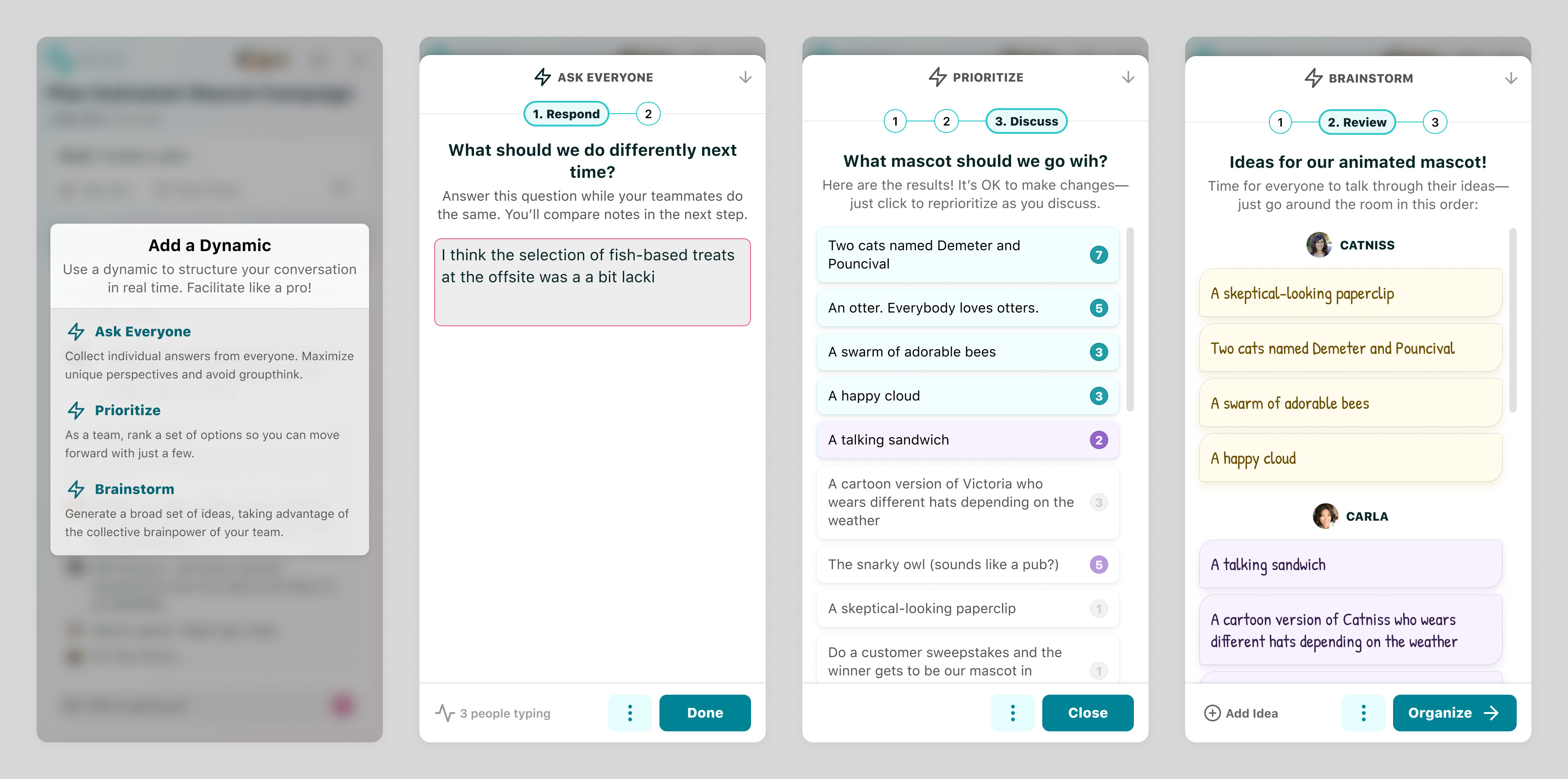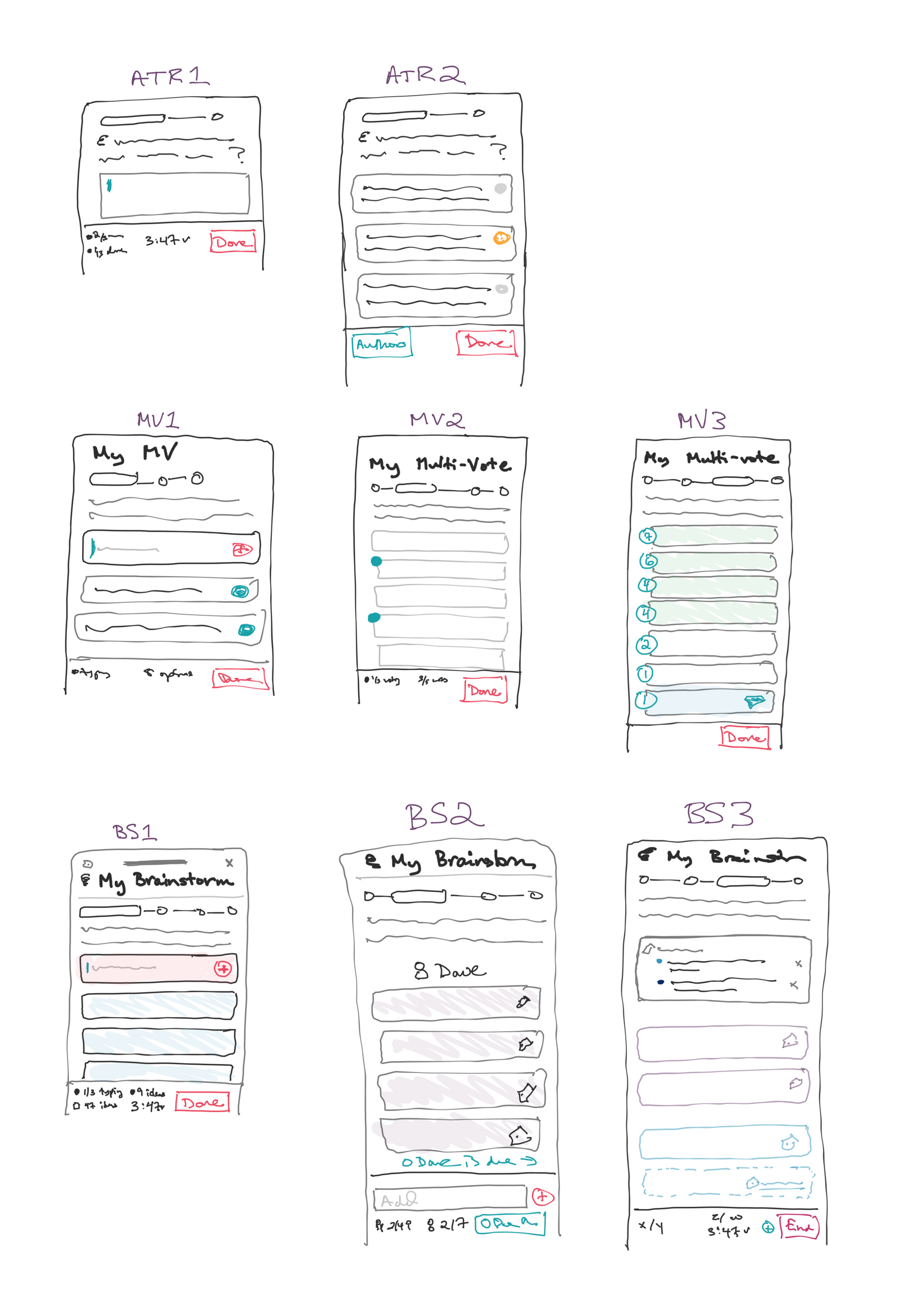
Miter: Dynamics
- ← Projects
- Date:2022
- Role:CEO & Founder
Background
I co-founded Miter in 2020 to build software that guides people to better internal meetings, using a workflow rooted in meeting research and behavioral science. We shut Miter down at the end of 2020 due to lack of product-market fit.
Project Overview
Effective meetings often need structure beyond freeform conversation (which can easily devolve into three people arguing while everyone else watches). Skilled facilitators know how to match a topic and its goals with an appropriate structure, how to lead a group through it, and how to use general-purpose tools like Miro, Excel, or post-its to do so. But most people aren't experienced facilitators and don't know how to do this.
With Dynamics, Miter offered facilitation in a box: tools to guide a group through common types of structured conversation, on demand and without the need for prior knowledge.

Unlike the meeting templates offered by many of our competitors, Dynamics were granular (per-topic, not per-meeting), active (mini-apps rather than just docs or forms to fill out), and approachable (no prior knowledge required).
Process
This was the first time our entire four-person team worked together on one feature. Our preexisting sprint retrospectives and agile mindset served us well, allowing us to reflect and iterate on process week by week. What worked:
-
Low-fidelity design artifacts (design briefs, sketches) combined with frequent ad-hoc discussion.
-
Up-front engineering briefs—we learned these were more necessary than expected for coordination at the architectural level.
-
Limited documentation, rooted in frequent conversation and and expectation of cross-functional iteration.
We also built Dynamics as more of an extensible platform that I'd initially expected, which is always a risk early on. But here, it was a good risk to take: the first dynamic took two months to build; the second, two weeks; and the third, one day.

Dynamics in Action
Here's part of our demo video, showing Dynamics in action:
Reflection
Dynamics is arguably Miter's most impressive feature. I also think it's our most durable and promising functionality: unlike Miter as a whole, Dynamics address a more widely-accepted task; and their payoff is more visceral and immediate. And because Dynamics had so little in the way of prior art or direct precedents, it was an opportunity to get creative—one that resulted in some of my best work.
And so it's sad that Dynamics was buried inside a product that ultimately couldn't find market fit. Delivered as part of a different product, I could see it succeeding.